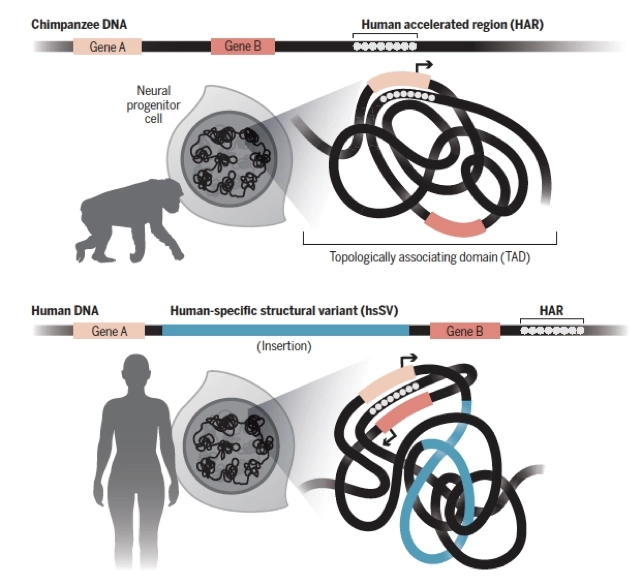The pastiera recipe has been handed down in my family for 4 generations. Unaltered, sacred, still in its old notebook from the late 800th century. Think about how difficult it is to change the recipes that Mother Nature has perfected over millennia and millennia. Most mammals share DNA sequences that have remained unchanged for millions of years, but humans have unique elements that are a curious exception.
A sudden and decisive change in human DNA has made us unique
For some reason, some “recipes” of our DNA, preserved by our ancestors, underwent rapid evolution, giving rise to the so-called “human accelerated regions” (HAR). Scientists believe these HARs are responsible for many of the unique elements that distinguish humans from our closest relatives, such as chimpanzees and bonobos.

Katie Pollard and his team of researchers at the Gladstone Institute for Data Science and Biotechnology in the US, studied HARs and how human DNA folds within the cell nucleus. In the paper published in Science (I link it here) claim that these structural changes were unique to our developing brain.
What happened?
Imagine a long “shawl” of DNA, similar to that of our last common ancestor with chimpanzees. Now imagine that someone tried to replicate the same shawl, but with some changes to the original design. The resulting shawl now has unique features, with wider or narrower stripes and colors arranged differently. Here's what happened to human DNA compared to that of other primates.
Pollard's team discovered that nearly 30% of HARs it is found in regions of the DNA where structural variations have caused the human genome to fold differently than in other primates.
The things that make us unique
Many HARs play a fundamental role in embryonic development, particularly in the formation of neural pathways associated with intelligence, reading, social skills, memory, attention and concentration: our hallmarks.
“Imagine you are an enhancer controlling hormone levels in the blood and then, due to a new way of folding DNA, you suddenly find yourself near a neurotransmitter gene and have to regulate chemical levels in the brain instead of in the blood,” he explains Pollard.
“When such a radical change occurs in the structure of the genome, our cells must quickly adapt to avoid an evolutionary disadvantage.”

How did it happen?
Exactly how these changes affected unique aspects of our brain development and how they became an integral part of our species' DNA is still not understood. However, Pollard and his team are already planning further research to delve into these questions.
One thing is certain: discoveries like this show how incredible and unique the evolution of the human brain is.


